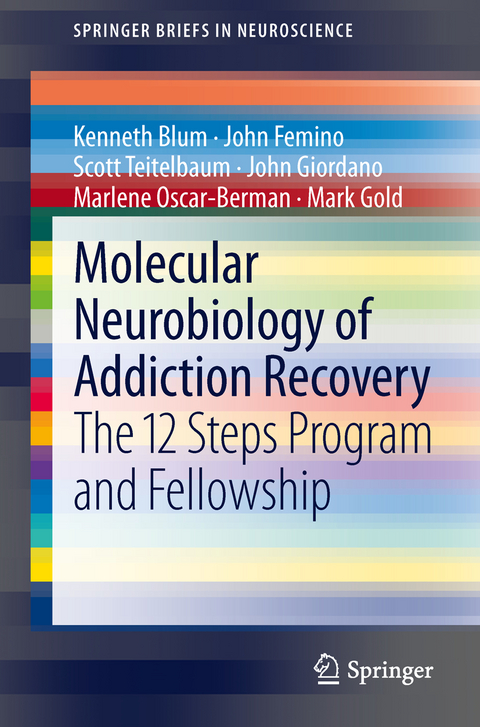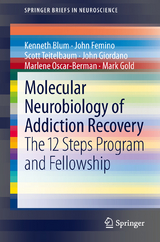Molecular Neurobiology of Addiction Recovery
The 12 Steps Program and Fellowship
Seiten
2013
Springer-Verlag New York Inc.
978-1-4614-7229-2 (ISBN)
Springer-Verlag New York Inc.
978-1-4614-7229-2 (ISBN)
Since Alcoholics Anonymous was founded in 1935, it's 12 step program of spiritual and character development has helped countless alcoholics and drug addicts curb their self-destructive behaviors.
Humans are biologically programmed to seek out pleasurable experiences. These experiences are processed in the mesolimbic system, also referred to as the "reward center" of the brain, where a number of chemical messengers work in concert to provide a net release of dopamine in the Nucleus Accumbens. In some genetically predisposed individuals, addiction occurs when the mechanisms of the mesolimbic system are disrupted by the use of various drugs of abuse. Since Alcoholics Anonymous was founded in 1935, it's 12 step program of spiritual and character development has helped countless alcoholics and drug addicts curb their self-destructive behaviors. However, the program was developed at a time when comparatively little was known about the function of the brain and it has never been studied scientifically. This is the first book to take a systematic look at the molecular neurobiology associated with each of the 12 steps and to review the significant body of addiction research literature that is pertinent to the program.
Humans are biologically programmed to seek out pleasurable experiences. These experiences are processed in the mesolimbic system, also referred to as the "reward center" of the brain, where a number of chemical messengers work in concert to provide a net release of dopamine in the Nucleus Accumbens. In some genetically predisposed individuals, addiction occurs when the mechanisms of the mesolimbic system are disrupted by the use of various drugs of abuse. Since Alcoholics Anonymous was founded in 1935, it's 12 step program of spiritual and character development has helped countless alcoholics and drug addicts curb their self-destructive behaviors. However, the program was developed at a time when comparatively little was known about the function of the brain and it has never been studied scientifically. This is the first book to take a systematic look at the molecular neurobiology associated with each of the 12 steps and to review the significant body of addiction research literature that is pertinent to the program.
Preamble.- Introduction.- Molecular neurobiology of recovery with the twelve steps.- Conclusions.- Acknowledgements.
| Reihe/Serie | SpringerBriefs in Neuroscience |
|---|---|
| Zusatzinfo | 11 Illustrations, color; XII, 89 p. 11 illus. in color. |
| Verlagsort | New York, NY |
| Sprache | englisch |
| Maße | 155 x 235 mm |
| Themenwelt | Medizin / Pharmazie ► Allgemeines / Lexika |
| Medizin / Pharmazie ► Medizinische Fachgebiete ► Neurologie | |
| Medizin / Pharmazie ► Studium | |
| Naturwissenschaften ► Biologie ► Humanbiologie | |
| Naturwissenschaften ► Biologie ► Zoologie | |
| Schlagworte | 12 steps program • addiction • dopamine • molecular neurobiology • Reward Deficiency Syndrome |
| ISBN-10 | 1-4614-7229-6 / 1461472296 |
| ISBN-13 | 978-1-4614-7229-2 / 9781461472292 |
| Zustand | Neuware |
| Haben Sie eine Frage zum Produkt? |
Mehr entdecken
aus dem Bereich
aus dem Bereich
interdisziplinäre Diagnose- und Behandlungsstrategien
Buch | Hardcover (2024)
Urban & Fischer in Elsevier (Verlag)
97,00 €
Material für visuell Lernende
Buch | Softcover (2023)
Kohlhammer (Verlag)
44,00 €




